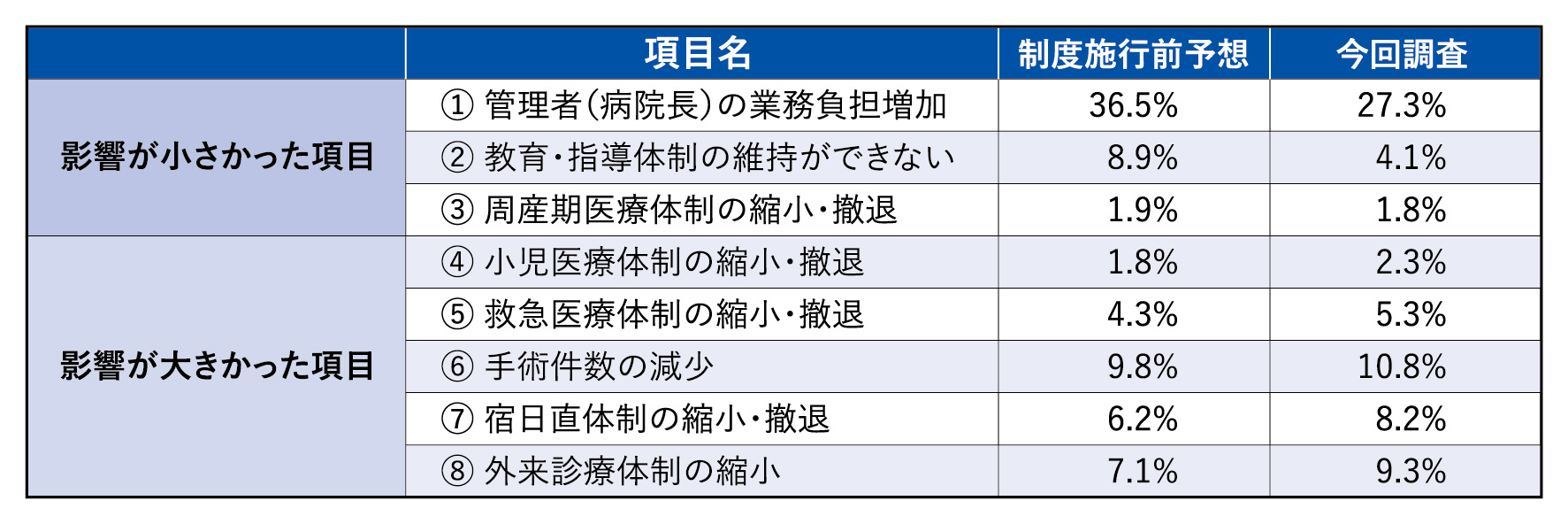
writing
Representative of Sensho Gumi Co., Ltd.
Former Ministry of Health, Labour and Welfare official
Yasuhiro Sensho
Graduated from the Faculty of Law at Keio University. Joined the Ministry of Health, Labor and Welfare in 2001 and was involved in the revision of eight laws. After retiring from the ministry in 2019, he founded the consulting company Sensei-gumi. He has served as a member of the Cabinet Office and the Ministry of the Environment's expert councils. He is an expert commentator for Asahi Shimbun Digital. His books include "Black Kasumigaseki" (Shinchosha).

The status and actual situation of the work style reform for doctors, which came into effect in April, is gradually becoming clearer. The post-implementation survey published by the Japan Medical Association on October 23, 2024, was a large-scale survey targeting 14,216 medical institutions nationwide, of which 4,082 (28.7%) responded. This time, we will introduce the results of this survey.

Many people have pointed out that the dispatch of doctors to other medical institutions may be restricted, but what is the actual situation? We present the results of responses from medical institutions that accept dispatched doctors.
① Impact of doctors withdrawing
11.2% of respondents said that the number of doctors has decreased compared to last year due to repatriation (13.0% predicted before the system was implemented), and 15.6% said that the number of doctors is expected to decrease from fiscal year 2025 onwards due to repatriation (22.8% predicted before the system was implemented). This suggests that the impact of both measures was smaller than expected at the time of the survey conducted before the system was implemented.
② Securing support doctors on night and day duty
21.6% of respondents said that it has become more difficult to secure backup doctors for night and day shifts compared to last year (24.8% predicted before the system was implemented), and 23.9% said that it is expected to become more difficult to secure backup doctors for night and day shifts from fiscal year 2025 onwards (32.7% predicted before the system was implemented).As with ①, both of these results suggest that the impact was smaller than expected at the time of the survey before the system was implemented.
The problems that we believe are actually occurring in the local medical care system are as follows:
① Increase in cases where emergency transport was difficult (refused) (15.6%)
② Increase in cases of difficulty in accepting (refusing to accept) patients referred by specialized medical departments (high-risk patients) (8.3%)
3) Increase in cases of transportation outside the medical district (7.5%)
④ Increase in cases of difficulty (refusal) in transporting mothers and accepting high-risk pregnancies (2.1%)
⑤ Other (1.4%)
Overall, compared to expectations before the system was implemented, it appears that the impact has been absorbed relatively well. On the other hand, it is clear that the workload of managers has increased. As the system has only been in place for about six months, continued attention will be needed to its impact on night and day shifts and emergency medical care.
Reference: Japan Medical Association Online "Survey on the reform of doctors' working practices and its impact on regional medical care"
Regarding the results of the (Post-implementation survey) https://www.med.orjp/nichiionline/article/011926.html